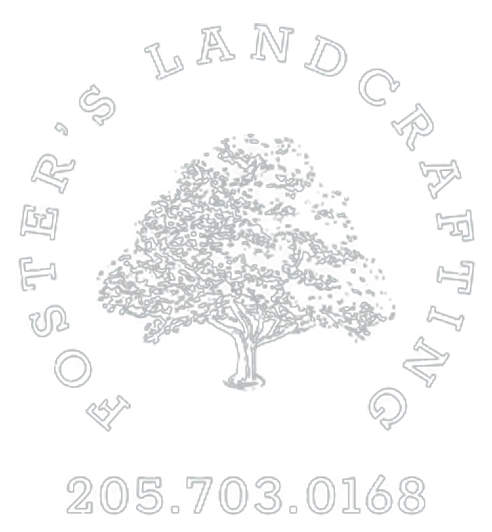Incorporating natural elegance into landscape and architectural design is a delicate art that requires a harmonious fusion of elements. Fosters Landcrafting, a leading company in Birmingham, Alabama, specializes in crafting breathtaking outdoor spaces that seamlessly blend nature and architecture. Their expertise in landscape and architectural design, combined with their innovative use of materials and systems, sets them apart as industry leaders. In this article, we will explore key tips and takeaways from Fosters Landcrafting on how to achieve a perfect fusion of natural elegance in landscape and architectural design.
Key Takeaways
- Understanding the principles of fusion design is essential for creating harmonious outdoor spaces.
- Incorporating natural elements into architectural structures adds depth and character to the design.
- Balancing aesthetics and functionality is crucial for the success of landscape and architectural fusion.
- Utilizing water features and systems can enhance the overall ambiance of outdoor spaces.
- Innovative use of lighting and rock placement can create captivating visual effects and focal points in the design.
The Art of Landscape and Architectural Design Fusion
Understanding the Principles of Fusion Design
Fusion design is an art that marries the natural beauty of the landscape with the structured elegance of architectural forms. The key to successful fusion design is achieving a seamless blend where each element complements the other. This approach not only enhances the visual appeal but also ensures that the environment is respected and highlighted.
Harmony is a fundamental principle in fusion design. It requires a deep understanding of both the built environment and the natural world to create spaces that feel both organic and intentional. To achieve this, designers must consider the following aspects:
- The inherent characteristics of the site
- The cultural and historical context
- The intended use and flow of the space
- The sustainability and environmental impact
By prioritizing these aspects, designers can craft spaces that are not only beautiful but also functional and sustainable. The ultimate goal is to create an environment that feels like a natural extension of the landscape, rather than an imposition upon it.
Incorporating Natural Elements into Architectural Structures
The seamless integration of natural elements into architectural structures is not just a trend but a sustainable approach to design. Incorporating natural materials such as wood, stone, and plants can enhance the aesthetic appeal while also providing environmental benefits. These materials help buildings blend with their surroundings, creating a sense of continuity between the built and natural environments.
Green roofs and living walls are excellent examples of how vegetation can be integrated into structures. They not only add beauty but also contribute to insulation and air purification. Here’s a list of benefits that such features offer:
- Improved air quality
- Natural insulation
- Increased biodiversity
- Aesthetic enhancement
- Stormwater management
By thoughtfully incorporating natural elements, architects and designers can create spaces that are both beautiful and functional, promoting well-being for its inhabitants.
The choice of materials and their application should be deliberate, aiming to achieve a balance between the natural and the man-made. It is essential to consider the local climate, the building’s orientation, and the intended use of the space to ensure that the integration of natural elements is not only visually pleasing but also practical and sustainable.
Balancing Aesthetics and Functionality
Achieving a harmonious balance between aesthetics and functionality is a cornerstone of successful landscape and architectural design fusion. Both elements must coexist without compromising the integrity of the other, ensuring that beauty enhances utility and vice versa. Designers must consider the practical aspects of maintenance and the longevity of materials while creating visually appealing spaces.
Functionality should not be an afterthought; it is integral to the design process. Thoughtful placement of elements such as walkways, seating, and lighting can enhance the user experience while contributing to the overall aesthetic. For instance:
- Walkways should provide a natural flow through the garden, inviting exploration while offering accessibility.
- Seating areas need to be strategically placed to capture views and provide comfort.
- Lighting should be used to highlight architectural features and ensure safety after dark.
The true skill lies in the designer’s ability to integrate functional components seamlessly into the landscape, making them appear as natural extensions of the environment rather than obtrusive additions.
Crafting Outdoor Spaces with Fosters Landcrafting
Utilizing Water Features and Systems
In the realm of landscape architecture, the integration of water features can transform a simple garden into a serene oasis. Fosters Landcrafting recognizes the allure of water as a central element in design, offering both visual and auditory tranquility. The sound of a gently babbling brook or the reflective surface of a still pond can create a sense of peace and harmony within an outdoor space.
Water features are not just aesthetically pleasing; they also play a crucial role in the ecosystem of a garden. By incorporating indigenous aquatic plants and fish, these features can become self-sustaining habitats that contribute to local biodiversity. Fosters Landcrafting employs a variety of water systems, each tailored to the unique requirements of the site and the desires of the client. Below is a list of water feature types commonly implemented:
- Reflective pools
- Naturalistic ponds
- Ornamental fountains
- Cascading waterfalls
- Streambeds
The careful placement and design of water features can significantly enhance the overall ambiance of an outdoor area, making it an inviting retreat for relaxation and contemplation. Fosters Landcrafting’s expertise ensures that these elements are not only beautiful but also environmentally responsible and easy to maintain.
Innovative Use of Lighting and Rock Placement
Fosters Landcrafting approaches lighting and rock placement with a keen eye for innovation, creating spaces that are both functional and aesthetically pleasing. Strategic lighting enhances the natural beauty of the landscape, while carefully placed rocks add texture and depth.
Lighting is not just about visibility; it’s about setting a mood and highlighting the architectural features that deserve attention. Fosters Landcrafting uses a variety of lighting techniques to achieve the desired effect:
- Uplighting to accentuate trees or architectural details
- Path lighting for safety and navigation
- Accent lighting to showcase water features or sculptures
When it comes to rock placement, the goal is to mimic natural landscapes. Rocks are selected for their shape, size, and color to fit seamlessly into the design:
By integrating rocks into the landscape, Fosters Landcrafting creates a sense of permanence and timelessness.
The combination of lighting and rock placement is crucial in transforming an ordinary space into a captivating environment. It’s the subtle interplay of light and shadow, the ruggedness of stone against the softness of foliage, that brings a design to life.
Maximizing the Potential of Pavers and Modular Block Wall Systems
Pavers and modular block wall systems offer a versatile and aesthetically pleasing solution for creating outdoor spaces that are both functional and beautiful. The key to maximizing their potential lies in the thoughtful integration of these materials into the overall design.
Pavers provide a durable and flexible surface for walkways, patios, and driveways. By selecting the right color, texture, and pattern, pavers can complement the architectural style of a building while also enhancing the natural landscape. Modular block wall systems, on the other hand, are ideal for creating terraces, retaining walls, and raised planters that add dimension and interest to the garden.
- Consider the scale and proportion of the paver design in relation to the surrounding structures.
- Choose modular blocks that echo the textures and colors found in the natural environment.
- Integrate lighting within the pavers and walls to highlight features and improve safety.
When designed with precision, pavers and modular block walls not only define spaces but also serve as a transition between the built environment and the natural world, creating a seamless flow that is both inviting and harmonious.
The Role of Consultation and Site Management
Importance of Professional Consultation in Landscape and Architectural Design
Seeking professional consultation is a cornerstone in achieving a harmonious blend between landscape and architectural design. Experts from Fosters Landcrafting bring a wealth of knowledge, ensuring that both aesthetic appeal and practicality are addressed from the outset. Their insight can help avoid costly mistakes and ensure that the design is both beautiful and sustainable.
Consultation is not just about getting advice; it’s a collaborative process. Working with a professional can help articulate a vision that reflects personal style while also respecting the natural environment. This partnership can lead to innovative solutions that might not be immediately apparent to the untrained eye.
- Understand the client’s vision and requirements
- Assess the site’s natural characteristics
- Propose design options and materials
- Address environmental and zoning regulations
- Plan for future maintenance and growth
By integrating professional consultation early in the design process, clients are equipped to make informed decisions that will shape their environment for years to come.
Efficient Site Management for Successful Projects
Efficient site management is the cornerstone of any successful landscape and architectural design project. It ensures that all elements of the design are implemented correctly and that the project stays on schedule and within budget.
Key aspects of site management include:
- Coordination of materials and labor
- Adherence to design specifications
- Monitoring of project milestones
- Quality control checks
Communication is a critical component of site management, facilitating the seamless integration of various teams and resources. A well-managed site also minimizes disruptions and maximizes safety for all involved.
By maintaining a high standard of site management, Fosters Landcrafting not only delivers projects that meet clients’ expectations but also creates spaces that stand the test of time.
Conclusion
In conclusion, Fosters Landcrafting offers a comprehensive range of landscape and architectural design services, including bidding and estimates, exterior construction, water features, irrigation systems, lighting systems, rock placement, pavers, modular block wall systems, masonry, steelwork, and site management. Their expertise in natural elegance and fusion of landscape and architectural design makes them a valuable resource for anyone seeking to enhance the beauty and functionality of outdoor spaces. With a focus on creativity, craftsmanship, and attention to detail, Fosters Landcrafting sets a high standard for innovative and sustainable design solutions in Birmingham, Alabama and beyond.
Frequently Asked Questions
What services does Fosters Landcrafting offer?
Fosters Landcrafting offers a wide range of services including landscape and architectural design, bidding and estimates, exterior construction, concrete work, woodwork, water features and systems, irrigation systems, lighting systems, rock placement, pavers and modular block wall systems, masonry, steelwork, and site management and consultation.
What is the process for incorporating natural elements into architectural structures?
Incorporating natural elements into architectural structures involves careful planning and design to seamlessly integrate natural materials such as wood, stone, and greenery into the built environment, creating a harmonious fusion of nature and architecture.
How does Fosters Landcrafting balance aesthetics and functionality in design?
Fosters Landcrafting places a strong emphasis on balancing aesthetics and functionality by creating designs that are visually stunning while also serving practical purposes, ensuring that outdoor spaces are not only beautiful but also functional for various activities and uses.
What are some innovative uses of lighting and rock placement in outdoor spaces?
Fosters Landcrafting utilizes innovative lighting techniques and strategic rock placement to enhance the visual appeal and ambiance of outdoor spaces, creating captivating lighting effects and natural rock formations that add character and beauty to the landscape.
How can consultation with professionals benefit landscape and architectural design projects?
Professional consultation provides valuable expertise and insights that can enhance the quality and success of landscape and architectural design projects, offering tailored solutions, creative ideas, and practical recommendations based on extensive experience and knowledge.
What is the importance of efficient site management in landscape and architectural projects?
Efficient site management is crucial for the smooth execution of landscape and architectural projects, ensuring that timelines are met, resources are utilized effectively, and construction processes are coordinated seamlessly to deliver high-quality results within budget and scope.

